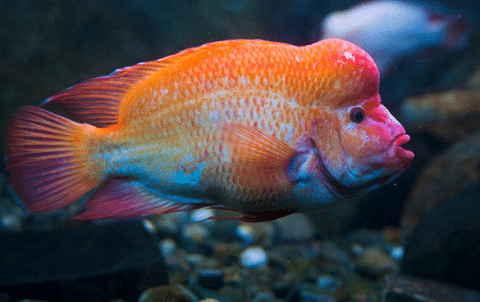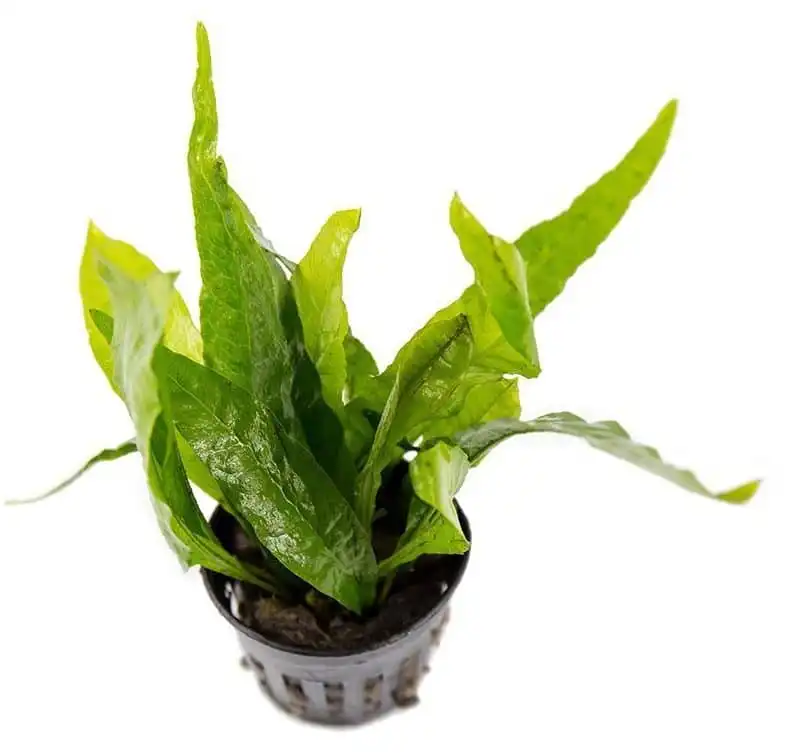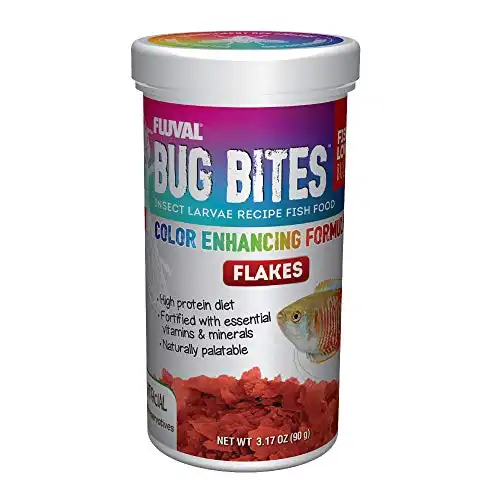Thank you for visiting! By the way… any links on this page that lead to products on Amazon and other stores/partners are affiliate links Aquarium Store Depot earns a commission if you make a purchase.
Have you ever considered adding a dash of fiery red to your aquarium? The Serpae Tetra might be just the fish you’re looking for! These vibrant, energetic, and low-maintenance freshwater fish are a great fit for many aquarists. Their peaceful yet lively nature makes them a popular choice for community tanks, but their care requires attention to detail.
In this complete guide, we’ll explore everything there is to know about Serpae Tetra care and breeding. From their Amazonian origins to ideal tankmates, we’ll make sure you have all the information you need to create a thriving and harmonious environment for these beautiful fish.
Key Takeaways
- Serpae tetras are infamous for their fin nipping behavior and are generally not considered a beginner fish
- With proper care, the lifespan of a Serpae Tetra can be extended up to 7 years
- They grow up to 2 inches and offer the boldest red among tetra species
- Choose compatible Tank Mates for your Serpae Tetras like Zebra Danios or Corydoras Catfish. Avoid slower fish or aggressive species for harmony in the aquarium!
Species Overview
| Scientific Name | Hyphessobrycon eques |
| Common Names | Serpae Tetra, Red Minor Tetra, Jewel Tetra, Callistus Tetra, Blood Tetra, Red Minor Tetra, Blood Characin |
| Family | Characidae |
| Origin | South America, Amazon Basin |
| Diet | Omnivorous |
| Care Difficulty | Easy |
| Activity | Active |
| Life Expectancy | 5 – 7 Years |
| Temperament | Peaceful – will nip fish with long fins |
| Tank Level | All |
| Minimum Tank Size | 20 gallons (75 liters) |
| Water Temperature Range | 72-79 F (22-26 C) |
| Water Hardness | 4 – 18 dKH |
| pH Range | 6 – 7.8 |
| Filtration/Water Flow | Moderate |
| Water Type | Freshwater |
| Breeding | Egg Scatterer |
| Difficulty to Breed | Moderate |
| Compatibility | Community thank with similar sized and temperament fish |
| OK, for Planted Tanks? | Yes |
Introduction
Serpae Tetras (Hyphessobrycon eques), also known as Jewel Tetras, Red Minor Tetras, or Callistus Tetras, are stunning freshwater fish that grab attention with their shimmering red and black hues. However, their beauty is not the only factor that makes them so popular among aquarists. These hardy fish are known for their low maintenance and adaptability, making them a great choice for aquarists looking for a red fish.
Native to the slow-moving backwaters of the Amazon River basin in South America, the Serpae Tetras are schooling fish that thrive in groups of six or more1. While they are generally peaceful, they can sometimes display fin-nipping behavior, especially towards slower-moving fish.
Their nipping isn’t due to them being aggressive with other fish (though they can be aggressive with their own kind). It’s because they are naturally curious and will get bored if kept in a small group. Their curiosity and hyperactivity will lead to nipping. You will experience similar behavior with Tiger Barbs, so that you will see less nipping with larger schools and in larger tanks.
In this guide, we’ll delve deeper into the world of Serpae Tetra care. Topics covered include:
- Natural habitat
- Appearance
- Ideal tank conditions
- Nutrition
- Tank mates
- Breeding
- Common health issues.
Origin And Natural Habitat
The Serpae Tetra (also known as jewel tetra) is a fish species native to the Amazon River basin. It is found in countries such as Argentina, Brazil, Paraguay, Peru, and Bolivia. In their natural habitat, these vibrant fish inhabit slow-moving backwaters with dark, murky water and plenty of vegetation (they usually swim around tree roots). When choosing Serpae Tetra tank mates, it’s essential to consider other peaceful and swift-swimming species that can coexist harmoniously in a similar environment.
Recreating their natural environment in your aquarium is crucial for the well-being of your fish. This includes providing slow-moving water flow, dim lighting, and maintaining suitable water parameters. Blackwater extract, tannins, or peat can be used to replicate the acidic, soft water conditions native to a species’ natural environment. This allows an aquarium to more accurately mirror the fish’s original habitat, providing a better environment for them to live in.
Appearance & Gender Differences

Serpae Tetras, including adult serpae tetras, are known for their striking appearance. They have:
- A reddish-brown body
- Shimmering scales that glisten in the light
- A unique black comma-shaped spot on their sides
- A square-shaped dorsal fin covered in dark black
Males and female serpae tetra exhibit some differences in appearance.
- Males tend to be more brightly colored, and their dorsal fin is almost completely black.
- In contrast, females have a slightly duller coloration, are plumper, and lack color under their fins.
- As Serpae Tetras age, their colors may become less intense.
They are often confused with another similar looking tetra species called the Red Phantom Tetra. The Red Phantom has the same markings and colors. However, Male Serpae have black on their tail fins and is a more robust looking fish with bolder reds. Red phantoms are also more common in the aquarium trade. It’s likely that your fish store mislabels these two fish, so know the differences. Red phantoms are generally considered easier to keep.
Lifespan
Serpae Tetras have a lifespan of 5-7 years in captivity, which can be extended with proper care. Factors that can affect their lifespan include unfavorable water conditions, an undersized tank, and an inadequate diet.
To keep your sheep Tetra healthy, it’s essential to provide a spacious tank, maintain clean water, and feed them a balanced diet.
Average Size
Serpae Tetras, also known as long fin red minor, are relatively small fish, with an average adult serpae tetra size of around 2 inches (usually 1.75 inches). Despite their small size, Serpae Tetras are active and lively, making them a captivating addition to any aquarium. They have the boldest red of all tetras.
Creating The Ideal Serpae Tetra Environment

Creating the perfect environment for your Serpae Tetras is essential to mimic their natural habitat and ensure their health and well-being. This involves providing suitable tank conditions, such as appropriate water parameters, decorations, and plant life.
In this section, we’ll explore how to create the ideal environment for Serpae Tetra, focusing on tank size, water parameters, and decoration and plant suggestions that will keep your fish happy, healthy, and thriving.
Tank Size & Water Parameters
A 20-gallon tank is recommended as the minimum for a group of six Serpae Tetras. It is recommended that you go for a larger tank as having a larger school with help curb nipping and make them calmer.
In terms of water parameters, Serpae Tetras prefer a temperature range of 72°F to 79°F, a pH level between 6 and 7.8, and a water hardness between 5 and 20 dGH. Maintaining these water conditions is crucial for the well-being of your Serpae Tetras and will help prevent potential health issues. You will also want to monitor these nutrient levels to keep your tetra fish in a low stress environment
To replicate their natural environment, it’s also essential to provide slow-moving water flow, dim lighting, and dark, sandy substrate in the tank. Adding blackwater extract or peat can help mimic the acidic, soft water conditions found in their native Amazon River basin.
Decorations & Plant Life
In addition to maintaining suitable water parameters, providing an appropriate underwater landscape is essential for your Serpae Tetras’ well being. This includes incorporating plenty of vegetation and tank decorations that offer shelter and mimic their natural habitat.
Java Fern is one of the easiest and hardiest live plants you can purchase
Some excellent plant choices for a Serpae Tetra tank include Myriophyllum and Java moss, which provide shelter and mimic their native environment. It’s best to avoid plants with coarse leaves or spindly mops, as Serpae Tetra prefer more delicate, fine-leaved plants. Don’t forget to add some floating plants for extra cover and a more natural feel. Here are some solid plants you can add:
Low light plants are best since they will become reclusive in high light environments.
Nutrition & Feeding Habits
As omnivorous fish, Serpae Tetras have a varied diet in the wild, consuming both plant matter and insect larvae. In captivity, it’s essential to provide them with a balanced serpae tetra diet that includes high-quality pellets and flakes, as well as protein-rich treats like blood worms, insect matter, and black worms.
A great product to try that has insect matter is Fluval Bug Bites. It is better to go with the flake food variety for these fish versus the pellet version due to their size. The more varied and balanced diet you have, the bolder the colors you will get out of your tetras.
A flake version of Fluval's amazing pellet bug bits products. Great for all tropical fish and high in protein.
Feeding Frequency & Portion Sizes
Feeding your Serpae Tetras multiple times a day is recommended, but it’s crucial to ensure they can consume the food within 1 minute at each feeding. To avoid overfeeding, start with a small amount of food and only add more if they finish it. Overfeeding can lead to excess waste in the tank, affecting water quality and potentially causing health issues for your fish.
In addition to high-quality flakes or pellets, supplementing your fish’s diet with live or frozen protein sources like bloodworms is a great way to provide them with the nutrients they need to stay healthy and vibrant.
Tank Mates

Choosing suitable tank mates for your Serpae Tetras is essential to ensure a peaceful and harmonious community in your aquarium. While Serpae Tetras are generally peaceful fish, they can display fin-nipping behavior, especially towards slower-moving species and though with fancy long fins.
In this section, we’ll provide tips on selecting the best tank mates for your Serpae Tetras, focusing on species that can coexist peacefully and create a balanced and harmonious environment.
Good Tank Mates
Ideal tankmates for Serpae Tetras include:
Keeping your Serpae Tetras in a school of at least six will help reduce aggression and stress levels, resulting in a more peaceful and harmonious community. You will have the most success if you can put them in a group of 15 or more. They will do best with fast moving fish like danios. Any dither fish should be pretty safe for them.
Serpaes are also safe around adult freshwater shrimp. They will eat baby shrimp, but full grown adult should be okay.
When selecting tank mates for your Serpae Tetras, it’s essential to consider the compatibility of their water parameters, dietary requirements, and activity levels. This will help ensure all species in your aquarium can coexist happily and thrive in their shared environment.
Species To Avoid

When housing Serpae Tetras, it’s important to avoid certain species to prevent potential conflicts. Slow-moving fish with long fins should be avoided, as Serpaes will nip the fines of them. Additionally, larger and more aggressive species, such as large cichlids, should be avoided, as they can cause stress, injury, or even eat your tetras.
By carefully selecting compatible tank mates for your species, you can create a harmonious and balanced community where all species can thrive and coexist peacefully without the need for a separate tank.
Breeding
Breeding Serpae Tetras can be an exciting and rewarding experience for aquarists. To successfully breed these fish, you’ll need to set up a separate breeding tank, condition the adult fish, and care for the eggs and fry as they develop.
Below is a video by Aquarium Fish DIY that shows a natural way to breeding these fish. Breeding is a separate section that can be a post within itself. To help you learn, I believe a video with the process is best.
Fry can be fed baby brine shrimp, powered flake foods, or infusoria
Common Health Issues
Like many freshwater species, Serpae Tetras can be prone to certain health issues, including common ailments such as Ich, fungal infections, and skin flukes. To prevent these health problems, it’s critical to maintain suitable water conditions, monitor water parameters regularly, and provide a balanced diet for your fish.
If you notice any signs of illness in your Serpae Tetras, you will need to address the issue promptly. This may involve adjusting water parameters, improving tank cleanliness, or providing appropriate treatment for the specific ailment. Some diseases like velvet will require a hospital tank. By staying vigilant and proactive, you can ensure the health and well being of your Serpae Tetras.
Frequently Asked Questions
How many serpae tetras should be kept together?
For optimal living conditions, species should be kept together in a minimum tank size of 20 gallons and a group of 5-7 individuals. It’s best to avoid slow fish that could be targeted for fin nipping. To curb nipping, try to have a larger school. A school of 15 or more of them is recommended to keep nipping at a minimum.
What fish get along with serpae tetras?
Serpae tetras can be kept with other fish of a similar or larger size, such as barbs, danios, and larger tetras; or bottom-dwelling catfish and loaches. Fish with long, flowing fins or slow-moving fish like angelfish and bettas should be avoided.
Pictus catfish and German Blue Rams are also suitable tankmates.
How big does a serpae tetra get?
The Serpae tetra typically grows up to 2 inches in length. They are identifiable by their red body and black spot near their gills.
What is the ideal tank size for a group of Serpae Tetras?
For a group of six Serpae Tetras, an ideal tank size is 20 gallons. It is recommended that you go larger than this in order to house a larger school of Serpaes.
How often should Serpae Tetras be fed?
Feed your Serpae Tetras twice a day to keep them healthy and happy. Feedings should be short so you do not overfeed your fish. Feed them enough food that they can consume in a minute to start.
Closing Thoughts
To sum up, Serpae Tetras are vibrant, active, and low-maintenance schooling fish that make a captivating addition to any aquarium. By understanding their natural habitat, appearance, ideal tank conditions, nutrition, tank mates, breeding, and common health issues, you can provide the best possible care for these beautiful fish.
With proper care and attention to detail, you can create a thriving and harmonious environment for your Serpae Tetras, ensuring that they live a long, healthy, and happy life in your aquarium. Do you have a Serpae tetra school? Let us know in the comments. We love to hear from our readers. Until next time!
- About the Author
- Latest Posts
I’m thrilled that you found Aquarium Store Depot! Here you’ll find information on fish, aquariums, and all things aquatics related. I’m a hobbyist (being doing this since I was 11) and here to help other hobbyists thrive with their aquariums! I adhere to a high quality Editorial Process and Review products with real life field usage and practical analysis.







